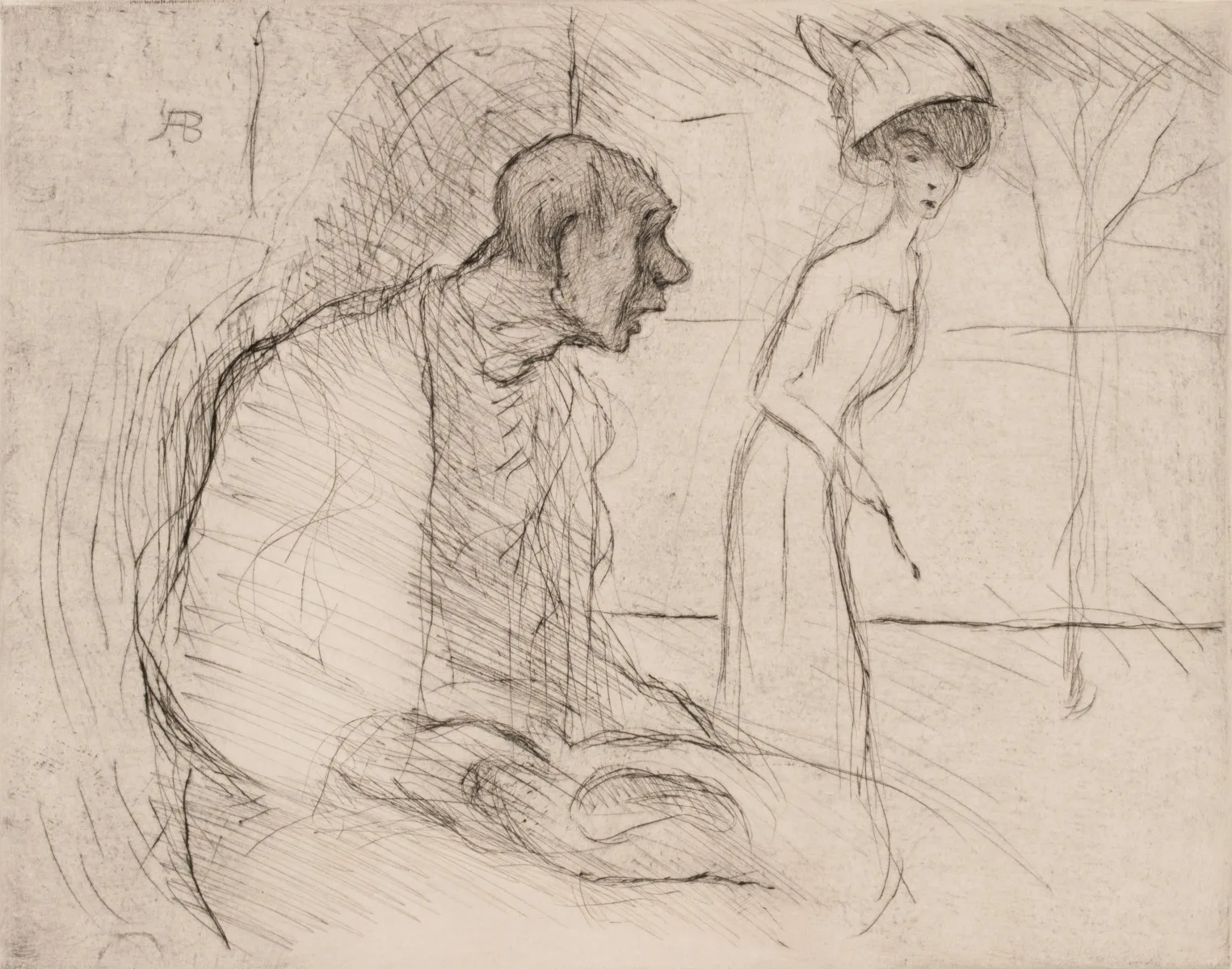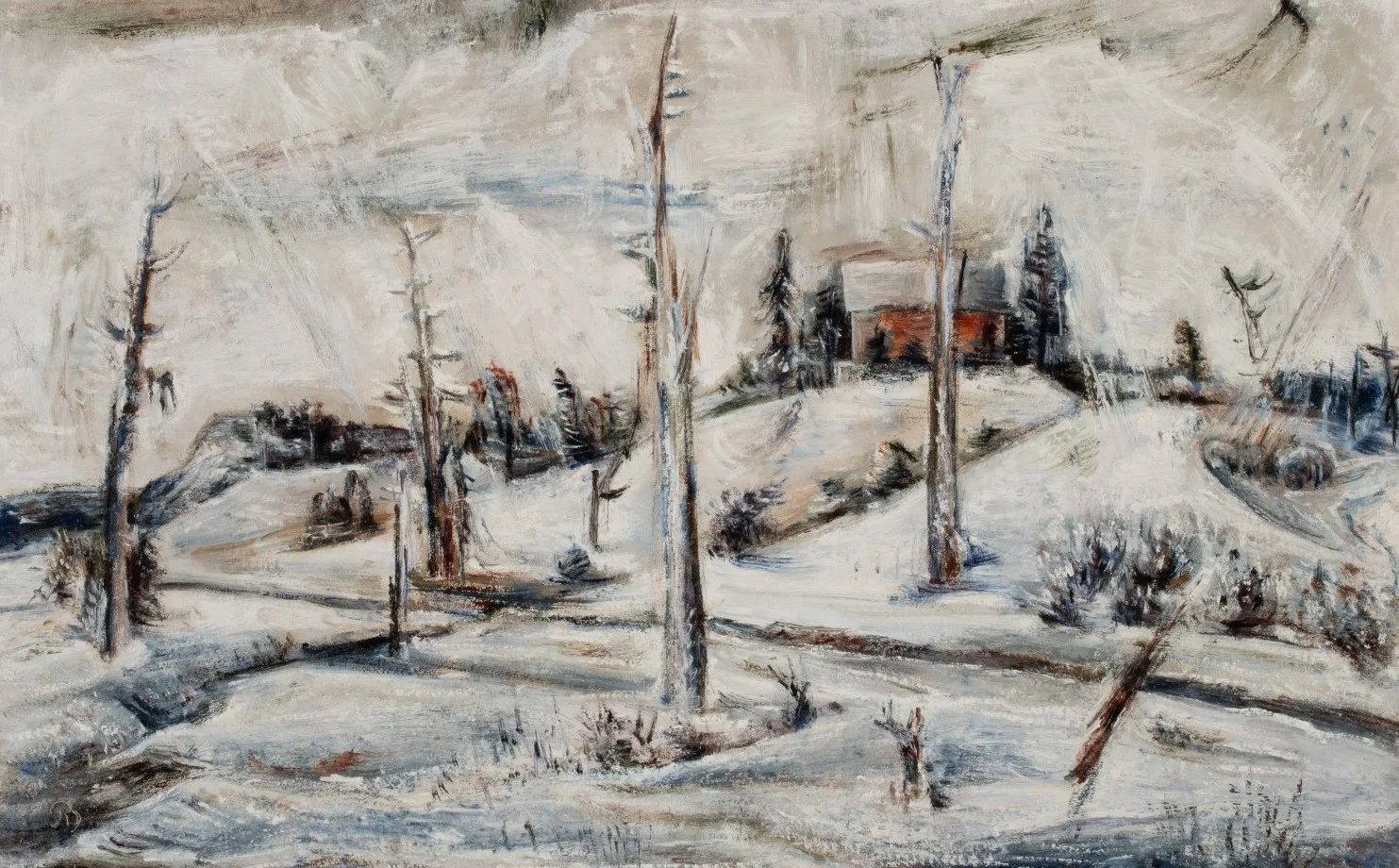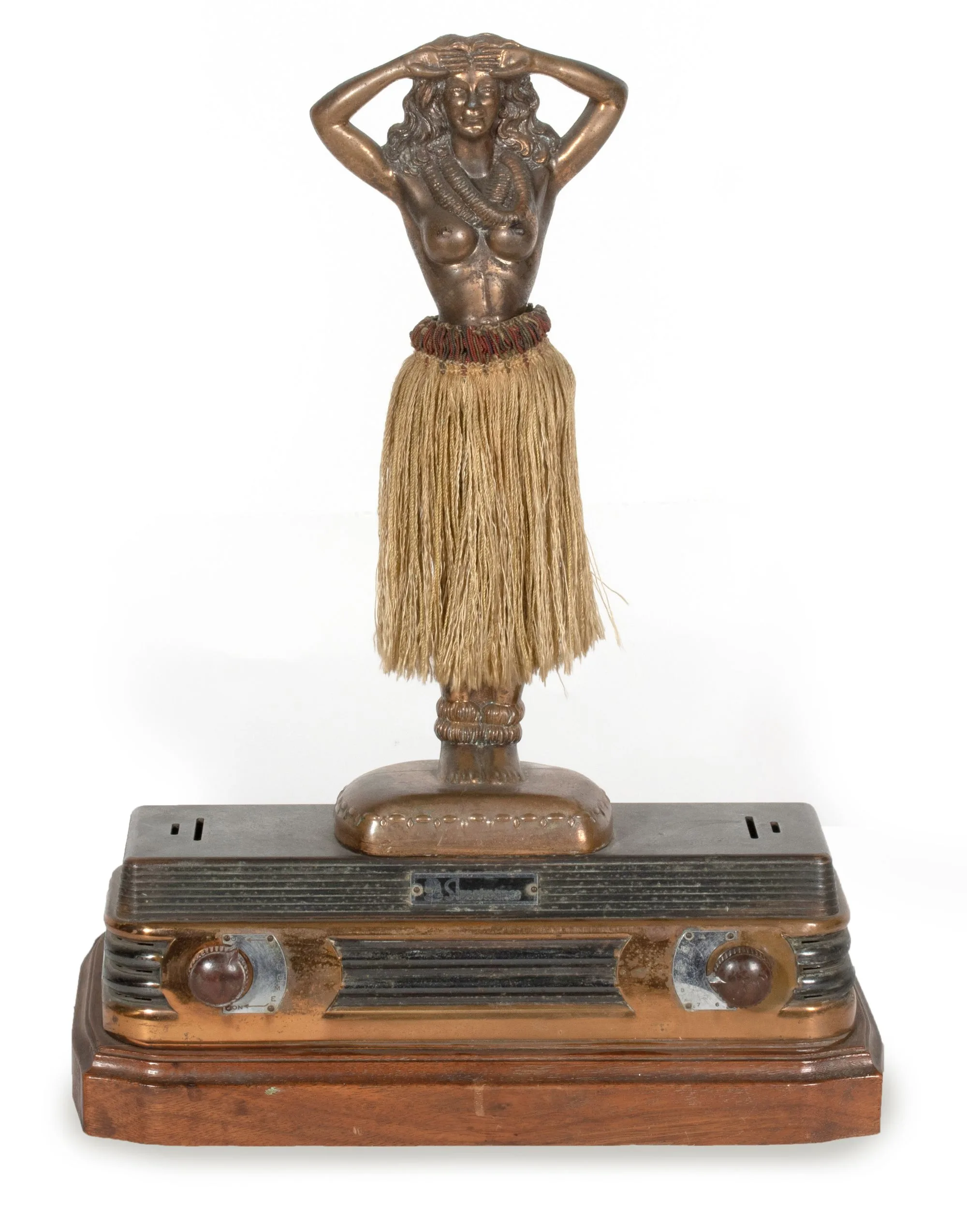ALBERT BLOCH
1882, Saint Louis, Missouri
1961, Lawrence, Kansas
A significant figure in the history of 20th – century art in the American Midwest, Albert Bloch headed the Department of Drawing and Painting at the University of Kansas from 1923 to 1947. His main claim to art-historical fame, however, is as the only American artist to exhibit with the Munich-based expressionist group der Blaue Reiter (the Blue Rider) in 1911 and 1912. Led by Vasily Kandinsky and Franz Marc, the Blue Rider artists generally conceived of art as an elevated, spiritual calling – an attitude that Bloch embraced from the time of his association with the group.
Born and raised in Saint Louis, Bloch studied at the Saint Louis School of Fine Arts from 1898-1900 and started his career as an illustrator, cartoonist, and caricaturist, principally for the weekly Saint Louis magazine, The Mirror. He moved with his family to Munich in 1909 and continued to work as an illustrator for the next few years while he taught himself to paint by studying the Old Masters and modern French and German painting.
Among the works Bloch created during his early years in Munich were several prints executed with the drypoint technique. In drypoint, the artist cuts lines into a metal printing plate using a needle with a sharp metal or diamond tip. The needle raises ridges of metal along the sides of the cut called the burr. Ink inheres in the incised lines and burr after the surface of the inked plate is wiped clean. The artist lays damp paper over the plate and runs it through a press to transfer the ink to the paper. The burr produces a slightly fuzzy line when printed.  Bloch’s observation of people in the streets of Munich’s bohemian Schwabing quarter may have inspired his drypoint The Princess and the Beggar (1910). The setting is an urban environment with a background wall at the left and a spindly tree at the right. Bloch placed his early monogram, a combined blocky A and B, in the window. The striking composition features the imposing figure of a male beggar seated in the foreground, his hat in hand resting on his lap. With a hollow-eyed, open-mouthed, pleading expression, he looks in profile toward the willowy princess passing by in the middle ground. An implied diagonal line runs from the beggar’s right shoulder and shadowed bare head to the tip of the princess’s oversize hat, emphasizing the contrast between their social and economic standing. The agitated lines around the beggar’s back and head suggest his torment as the princess peers inscrutably in his direction. Will she help him or walk on by? Bloch provides no answer, inviting the viewer to imagine what will happen next.
Bloch’s observation of people in the streets of Munich’s bohemian Schwabing quarter may have inspired his drypoint The Princess and the Beggar (1910). The setting is an urban environment with a background wall at the left and a spindly tree at the right. Bloch placed his early monogram, a combined blocky A and B, in the window. The striking composition features the imposing figure of a male beggar seated in the foreground, his hat in hand resting on his lap. With a hollow-eyed, open-mouthed, pleading expression, he looks in profile toward the willowy princess passing by in the middle ground. An implied diagonal line runs from the beggar’s right shoulder and shadowed bare head to the tip of the princess’s oversize hat, emphasizing the contrast between their social and economic standing. The agitated lines around the beggar’s back and head suggest his torment as the princess peers inscrutably in his direction. Will she help him or walk on by? Bloch provides no answer, inviting the viewer to imagine what will happen next.
 A second drypoint, Bar (1913), depicts the interior of a drinking establishment filled with male customers in hats and coats. A rotund bartender at the upper right center presides over the scene. He attends to the three men standing at the bar, which recedes along a diagonal drawing the eye to a group of three standing figures at the right. At the lower right, a smoking man in a bowler hat sits facing the viewer at a round table with a glass of wine. Sketchy lines in several areas of the men’s bodies – such as across the back and right arm of the leftmost standing figure– were likely made by a scraper that Bloch used to make corrections in the plate, while a few zigzag lines along the upper left are abstract elements that suggest noise and energy. In amusing contrast to the happily imbibing men, a scrawny dog crouches on the floor next to a food or water bowl whose shadowed concave interior is a black ellipse. Bloch signed the plate at the lower left with his cursive monogram combining the letters A and B. Signs in English on the back wall suggest that this is an English or American bar rather than a German one. Perhaps Bloch included this verbiage as an “exotic” element that might appeal to German art buyers while making the print accessible to potential customers back in his home country. Bloch’s informal composition creates a relaxed atmosphere that invites viewers to imagine themselves sitting at a table and enjoying a drink in this space, as Bloch himself may have done while observing or sketching it.
A second drypoint, Bar (1913), depicts the interior of a drinking establishment filled with male customers in hats and coats. A rotund bartender at the upper right center presides over the scene. He attends to the three men standing at the bar, which recedes along a diagonal drawing the eye to a group of three standing figures at the right. At the lower right, a smoking man in a bowler hat sits facing the viewer at a round table with a glass of wine. Sketchy lines in several areas of the men’s bodies – such as across the back and right arm of the leftmost standing figure– were likely made by a scraper that Bloch used to make corrections in the plate, while a few zigzag lines along the upper left are abstract elements that suggest noise and energy. In amusing contrast to the happily imbibing men, a scrawny dog crouches on the floor next to a food or water bowl whose shadowed concave interior is a black ellipse. Bloch signed the plate at the lower left with his cursive monogram combining the letters A and B. Signs in English on the back wall suggest that this is an English or American bar rather than a German one. Perhaps Bloch included this verbiage as an “exotic” element that might appeal to German art buyers while making the print accessible to potential customers back in his home country. Bloch’s informal composition creates a relaxed atmosphere that invites viewers to imagine themselves sitting at a table and enjoying a drink in this space, as Bloch himself may have done while observing or sketching it.
 Bloch made the oil painting, Winter (1936), in Lawrence, Kansas, some fifteen years after his return to the United States from Germany. During his time in Germany (1909-19, 1920- 21), Bloch had assimilated the aesthetic innovations of Post-Impressionism, Fauvism, Expressionism, and Cubism in his painting. He exhibited widely in Germany and had a retrospective in 1921 at New York’s Daniel Gallery. However, after securing his teaching position in Kansas, Bloch largely withdrew from the art world, exhibiting only by invitation. He was content to draw and paint without pursuing sales because he viewed art as an elevated calling transcending the capitalist-driven materialism of modern American life.
Bloch made the oil painting, Winter (1936), in Lawrence, Kansas, some fifteen years after his return to the United States from Germany. During his time in Germany (1909-19, 1920- 21), Bloch had assimilated the aesthetic innovations of Post-Impressionism, Fauvism, Expressionism, and Cubism in his painting. He exhibited widely in Germany and had a retrospective in 1921 at New York’s Daniel Gallery. However, after securing his teaching position in Kansas, Bloch largely withdrew from the art world, exhibiting only by invitation. He was content to draw and paint without pursuing sales because he viewed art as an elevated calling transcending the capitalist-driven materialism of modern American life.
Working in relative isolation in Lawrence, heedless of the fashionable trends in American art, Bloch in the 1930s developed a highly personal painting style of great expressive force using a palette of earth colors and cold blues overlaid with white. His study of older art and his observation of nature nourished his creativity, but he did not seek to reproduce what he saw; he worked from memory and imagination, enriched by visual discoveries made in the process of painting.
This is the case with Winter: it does not represent a specific landscape though it must have been partly inspired by Bloch’s observations of the rural Midwest. The horizontal composition shows a hilly, snow-covered terrain with a few limbless trees and scrubby foliage scattered around two rutted paths that cross in the lower left center. The more steeply rising path leads the eye to a lonely red house flanked by evergreen trees on a hilltop at the upper right center. Passages of blue throughout the painting impart a chilly quality while agitated strokes of white in the sky suggest blustery winds. We may sense in the limbless trees an echo of the forests devastated by the fighting of World War I, which Bloch lived through in Germany. The vision of a cold, stark, comfortless landscape also resonates with the mood of the Great Depression, which hung like a pall over the United States in the mid-1930s. However, the alignment of the foremost tree trunk’s right edge with the painting’s vertical axis creates a sense of stability and, ultimately, endurance. After winter, spring will come – and with it, renewal.
David Cateforis
Professor and Chair of Art History, The University of Kansas
Soulis Auctions 2024. All Rights Reserved
Privacy Policy / Terms of Use





